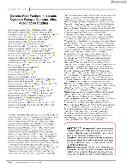Genetic Risk Factors in Isolated Dystonia Escape Genome-Wide Association Studies

Author
Laabs, Bjoern-Hergen
Lohmann, Katja
Vollstedt, Eva-Juliane
Reinberger, Tobias
Nuxoll, Lisa-Marie
Kilic-Berkmen, Gamze
Perlmutter, Joel S.
Loens, Sebastian
Cruchaga, Carlos
Franke, Andre
Dobricic, Valerija
Hinrichs, Frauke
Groezinger, Anne
Altenmueller, Eckart
Bellows, Steven
Boesch, Sylvia
Bressman, Susan B.
Duque, Kevin R.
Espay, Alberto J.
Ferbert, Andreas
Feuerstein, Jeanne S.
Frank, Samuel
Gasser, Thomas
Haslinger, Bernhard
Kaiser, Frank
Kamm, Christoph
Kollewe, Katja
Kuehn, Andrea A.
LeDoux, Mark S.
Lohmann, Ebba
Mahajan, Abhimanyu
Muenchau, Alexander
Multhaupt-Buell, Trisha
Pantelyat, Alexander
Pirio Richardson, Sarah E.
Raymond, Deborah
Reich, Stephen G.
Saunders Pullman, Rachel
Schormair, Barbara
Sharma, Nutan
Sichani, Azadeh Hamzehei
Simonyan, Kristina
Volkmann, Jens
Wagle Shukla, Aparna
Winkelmann, Juliane
Wright, Laura J.
Zech, Michael
Zeuner, Kirsten E.
Zittel, Simone
Kasten, Meike
Sun, Yan V.
Baeumer, Tobias
Brueggemann, Norbert
Ozelius, Laurie J.
Jinnah, Hyder A.
Klein, Christine
Koenig, Inke R.
Publication date
2024Published in
Movement DisordersVolume / Issue
39 (11)ISBN / ISSN
ISSN: 0885-3185ISBN / ISSN
eISSN: 1531-8257Metadata
Show full item recordCollections
This publication has a published version with DOI 10.1002/mds.29968
Abstract
Background: Despite considerable heritability, previous smaller genome-wide association studies (GWASs) have not identified any robust genetic risk factors for isolated dystonia. Objective: The objective of this study was to perform a large-scale GWAS in a well-characterized, multicenter sample of >6000 individuals to identify genetic risk factors for isolated dystonia. Methods: Array-based GWASs were performed on autosomes for 4303 dystonia participants and 2362 healthy control subjects of European ancestry with subgroup analysis based on age at onset, affected body regions, and a newly developed clinical score. Another 736 individuals were used for validation. Results: This GWAS identified no common genome-wide significant loci that could be replicated despite sufficient power to detect meaningful effects. Power analyses imply that the effects of individual variants are likely very small. Conclusions: Moderate single-nucleotide polymorphism-based heritability indicates that common variants do not contribute to isolated dystonia in this cohort. Sequence-based GWASs (eg, by whole-genome sequencing) might help to better understand the genetic basis. (C) 2024 The Author(s). Movement Disorders published by Wiley Periodicals LLC on behalf of International Parkinson and Movement Disorder Society.
Keywords
isolated dystonia, GWAS, age at onset, clinical score, case-control,
Permanent link
https://hdl.handle.net/20.500.14178/3042License
Full text of this result is licensed under: Creative Commons Uveďte původ-Neužívejte dílo komerčně-Nezpracovávejte 4.0 International






